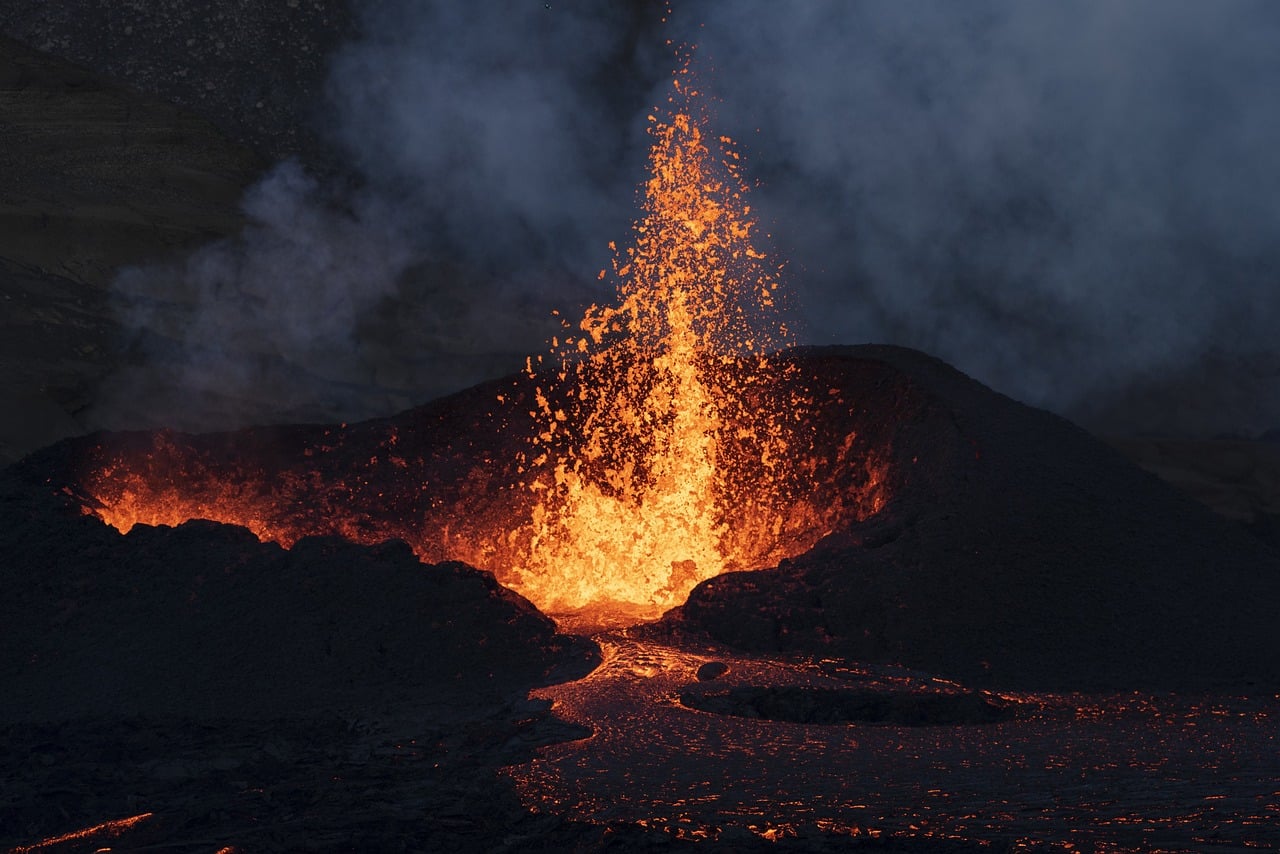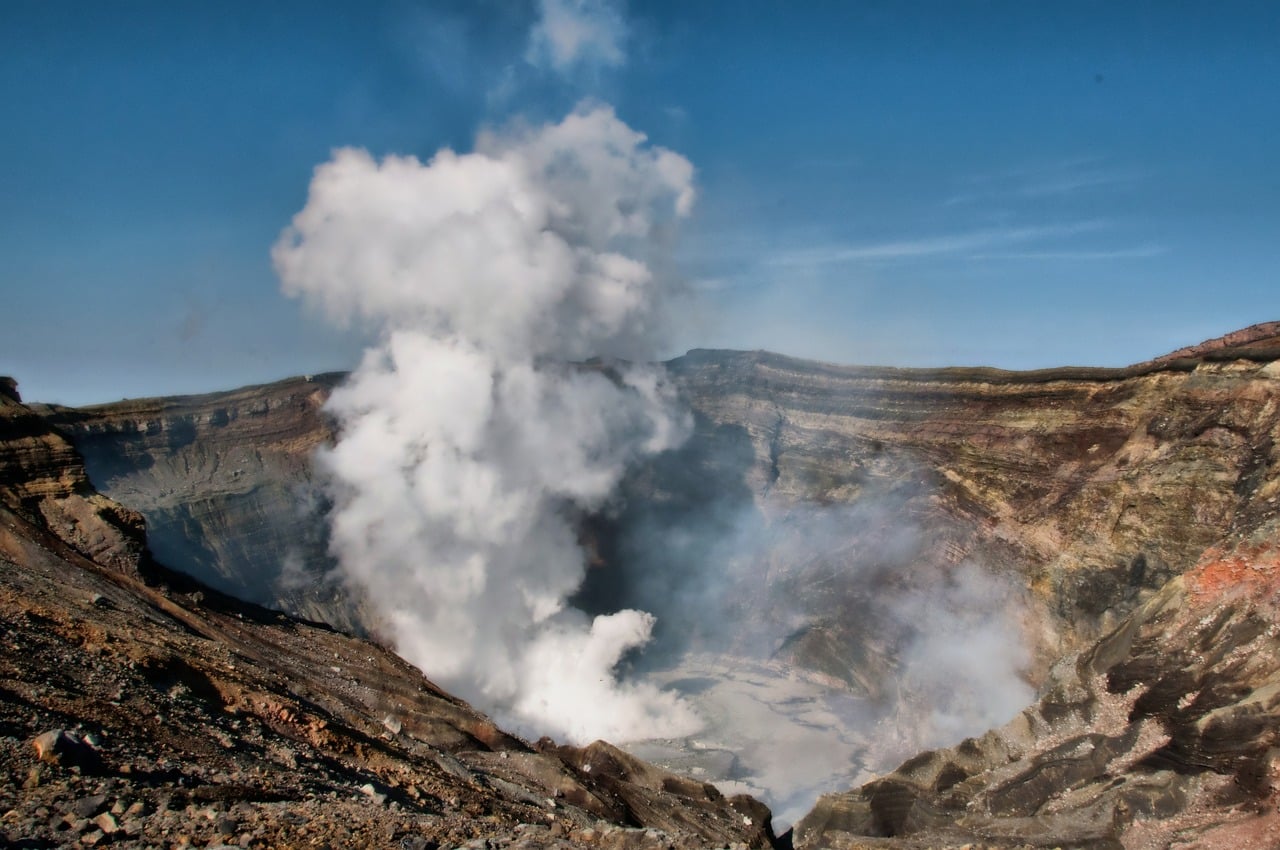
A stratovolcano, also called a composite volcano, has a conical shape, a crate in the center and is made up of several layers with rock fragments and lava deposits.
The volcanic eruption is an intense geological phenomenon that is characterized by the expulsion or exit of elements present within a volcano towards the surface of the Earth .
That which erupts with force from the interior of a volcano is a molten material (a mixture or fiery mass consolidated by cooling) that is called magma . It is important to know what kind of eruption it is each time since the materials and the magnitude of the potential dangers vary.
Types of volcanic eruption
There are many types of volcanic eruption . In a scenario of strong volcanic activity, it is common to detect solid fragments called pyroclasts (in Greek they are classified as tephra , a word that refers to ash ).
In general terms, it is possible to identify two types: effusive volcanic eruptions (with the release of gases without altering, as the magma rises, the pressure of the environment and already on the surface, recording what volcanology specialists call a flow) . of lava ) and explosive eruptions (a mode in which the magma ends up fragmented as volcanic ash that is violently expelled).
Likewise, a distinction is usually made between magmatic eruptions , phreatic eruptions and phreatomagmatic eruptions .
By accumulating more data and precision, the existence of multiple subtypes becomes apparent. In this context, the focus is on the Plinian-style eruption , the Strombolian-style eruption , and the Fightian-type eruption . The Hawaiian , the subglacial , the submarine , the Vulcanian and the fissure are other examples that account for all the classifications that appeared with the aim of differentiating each volcanic activity .
Impacts generated by the eruption of a volcano
The impacts generated by the eruption of a volcano are variable, but they have a negative impact on the environment and the health of numerous species of living beings.
Volcanic ash , according to statistics, threatens people's eye well-being, in addition to causing skin disorders and putting the human respiratory system at risk.
For safety, then, it is suggested that people keep a safe distance from active volcanoes . If an evacuation must be carried out, it is essential to respect the recommendations of trained personnel or suitable authorities and have protective elements available.
The climate is not indifferent either: when a volcano is active, enormous levels of metals, volcanic ash , particles (usually defined as aerosols ) and volcanic gases enter the atmosphere that, temporarily, change the climatic conditions of a locality, region or even more than one country. It cannot be overlooked that, in areas close to a volcanic eruption , both the humidity and the rain are acidic. Unfortunately, there is research that determined that, more than 250 million years ago, numerous volcanic eruptions that took place in Siberia caused a significant increase in carbon dioxide emitted and this led to ocean acidification , which is why a high number of species became extinct.
It is also exciting to know that due to powerful volcanic eruptions our planet can go through a brief cycle of global cooling , serving in some way as a coolant against global warming .

Several volcanic eruptions force a tsunami warning to be issued. Many times, underwater volcanoes end up causing tsunamis with devastating consequences.
Phenomena associated with a volcanic eruption
There are many phenomena that are associated with a volcanic eruption , some of which we will describe in the following paragraphs.
In explosive eruptions , for example, dangerous and unstoppable pyroclastic flows are formed (combinations of pyroclasts and very hot gases that arise when a volcanic dome or an eruptive column collapses or when the crater overflows and advance very quickly downwards over the terrain). .
Lahars , meanwhile, are volcanic mud flows that sometimes have a high temperature and, in other circumstances, are cold. They have the ability to extend for long kilometers and to be super destructive because they destroy everything in their path.
The fumaroles (detached from each lava flow and through external cracks of a volcano ), the geyser (located in territories in which there is energetic volcanic activity or volcanic rocks) and the solfataras (volcano openings that allow the escape of vapors). sulfurous) are other related phenomena.

The fiery clouds, originating from Plinian and Plinian eruptions, contain ash, water vapor and gases. They are formations that cause precipitation or rain based on ash.
Transcendent volcanic eruptions
There have been transcendent volcanic eruptions throughout history. On European soil, the eruption recorded around the year 79 on Mount Vesuvius was very devastating and harmful. Pompeii and other cities were razed to the ground, lying beneath a thick blanket of volcanic ash.
In 1815, meanwhile, Tambora Mountain was the scene of an eruption of magnitude 7 according to the Volcanic Explosivity Index ( VEI ). Records indicate that it had a very serious influence on climate matters and led to the death of around sixty thousand individuals. This phenomenon, added to other volcanic activities, led to 1816 being sadly remembered as the year without a summer or the year of poverty because the thermal marks dropped noticeably and there was a serious food shortage.
Krakatoa in Indonesia (which has erupted on different occasions with great power) and Pinatubo in the Philippines , which in 1991 left an indelible mark on the collective memory due to its harmful activity, also became popular due to the consequences they have caused.
